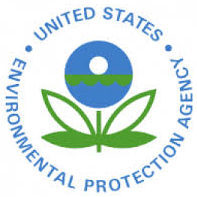
The U.S. Environmental Protection Agency (EPA) announced it is revising its registration for atrazine, a herbicide that has been used for nearly 60 years.
EPA proposes the following measures for all atrazine labels:
— To prohibit application when soils are saturated or above field capacity (i.e., the soil’s ability to retain water).
— To prohibit application during rain or when a storm event, likely to produce runoff from the treated area, is forecast to occur within 48 hours following application.
— Prohibit aerial applications of all formulations.
— To restrict annual application rates to 2 pounds of active ingredient or less per acre per year or less for applications to sorghum, field corn and sweet corn.
The EPA is also proposing to add a “picklist” to labels that would require growers to select a combination of application-rate reductions and/or runoff control measures when using atrazine in watersheds with atrazine concentrations that exceed a certain threshold.
“The number of runoff control practices from the picklist that a grower would be required to implement depends on the estimated atrazine concentration in the watershed where the field is located and that watershed’s vulnerability to atrazine runoff, as well as the grower’s selected application rate,” the agency said in a news release.
“The higher the application rate and the higher the estimated atrazine concentration in the watershed, the greater the number of mitigation practices that may be necessary.”
The EPA would not require picklist requirements for fields in watersheds where “predicted atrazine concentrations below 3.4 (micrograms per liter),” or about 82% of all U.S. watersheds.
However, EPA said fields located in watersheds with predicted atrazine concentrations between 3.4 and 9.8 — or about 8% of watersheds — would “generally” be required to choose one to four picklist requirements. That would depend on several factors, including application rates, crop, region and soil erodibility, according to the agency.
Watersheds with predicted atrazine concentrations above 9.8, according to EPA’s proposal, would have “the highest level of required picklist mitigations” to select.
“The picklist approach provides growers with the flexibility to select the runoff control practices that would be least burdensome to adopt,” EPA said in a news release.
In October 2020, EPA received a petition alleging the agency violated its duties under the Federal Insecticide, Fungicide, and Rodenticide Act, or FIFRA, by issuing the atrazine ID without “substantial evidence” supporting the decision.
The agency said in the news release it will seek external peer review as to the alleged risks presented by atrazine to aquatic plant species.
The public comment period has been launched for 60 days, under the docket identification number EPA-HQ-OPP-2013-0266 at www.regulations.gov.
